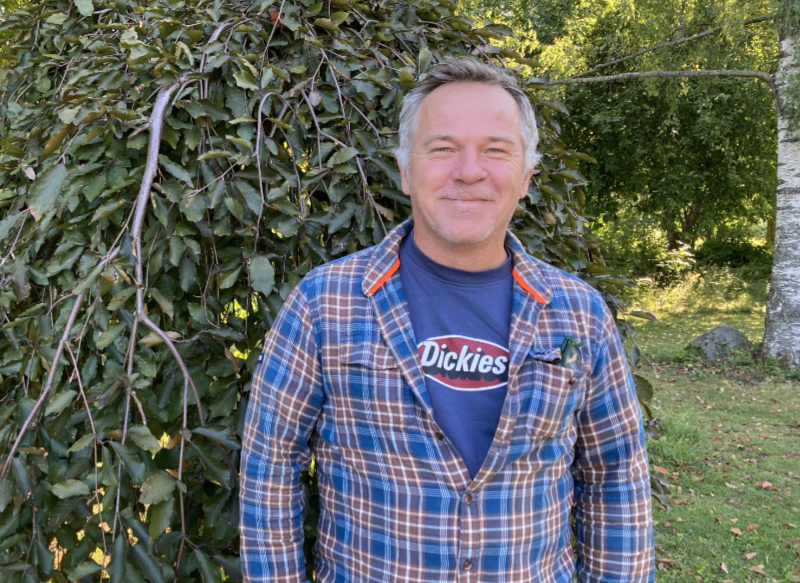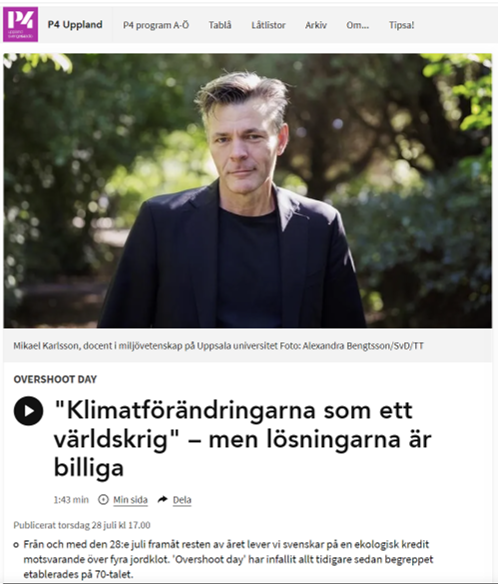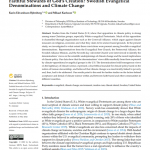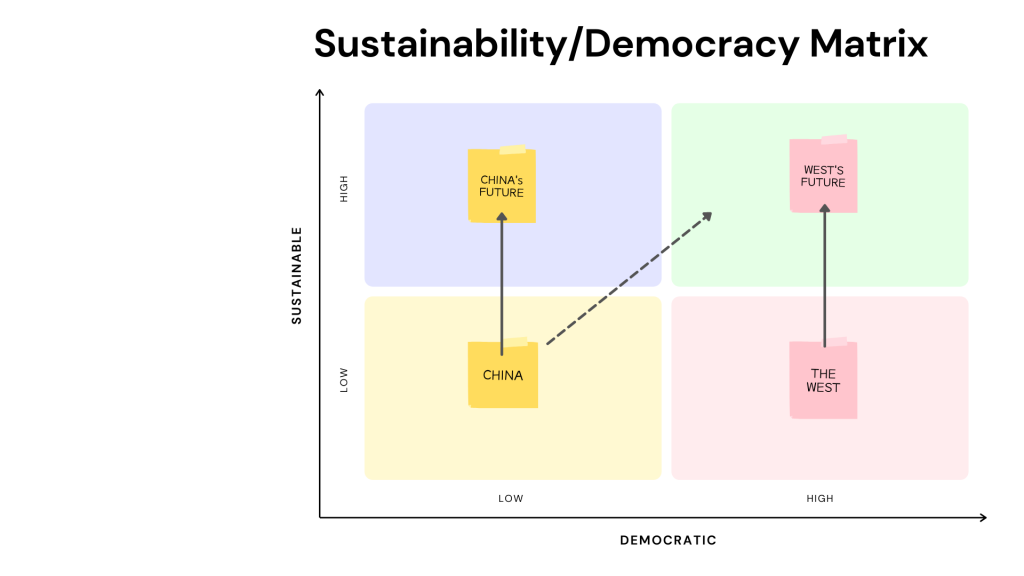This blog is part of a short series written by Laila Mendy, PhD student at NRHU, as she attended the Sustainability Frontiers conference.
The third session of the day, and the topic of the second blog post, relates to postgrowth economics and the alternatives to GDP-focused growth mentalities. Below is a short summary of the panel discussion and reflections.
Mine Islar moderated a discussion between Eric Kemp-Benedict, Jennifer Hinton, and Giorgos Kallis. The session began with an introduction to the idea that degrowth, postgrowth and other “agnostic” ideas may have the potential to close the gap between economic interests and biodiversity. The panelists each presented their understandings of how to approach this potential and the implications of leaving the current economic system in place.
Eric Kemp-Benedict began by explaining how helpful he finds Kate Raworth’s idea of doughnut economics and how it frames human-nature relations in terms of human needs but more than that needed to survive, but enough to flourish. There are, he says, two questions raised by the doughnut framing. The first is “What political and economic systems are consistent with this?” and the second considers “How do we get there?”
GDP has been a useful but incomplete measure for politics and policy-making. Today we know that in many parts of the world people do not have enough to survive, let alone thrive. Meeting their needs, he argued, requires significant development of technologies that must be created, maintained and improved. On the other hand, there is research that demonstrates the limits to how comfortable and happy wealthier parts of the world live. In short, we have some places where people have not enough to live well, and others who have too much. This is coupled with the arbitrary nature of what is calculated within GDP, in terms of labour or work: home-based childcare is not, maintaining the home is not*.
Kemp-Benedict pushed the arbitrary nature of GDP, explaining that while employment rates and gas prices are of immediate interest to people, particularly in terms of inflation as it erodes wealth and steps into the political-economy dimension, stock market inflation is generally not of concern for most people, other than populating the 24 hour news cycle. Based on this assessment, GDP should not be replaced by another similar measure, but rather should reorient the question to understand what ways of living are consistent with sustainability. Political decision-making tools should reflect that reality, rather than this fairly arbitrary measure.
To the second question, he raised the issue of decoupling GDP from material throughput (and therefore environmental impact). If it can not be, then the only direction is through degrowth. However, this has not happened in the past as, seemingly, it is not politically palatable. Therefore, he concludes, other roots might be worth investigating to break the GDP material flow, including other political interventions.
Jennifer Hinton intervened here by explaining how most sustainability researchers approach the fields in terms of meeting needs now and into the future within the ecological boundaries of the planet. This approach, she says, does not clarify the role of the economy in sustainable society. We are living within the context of economic growth as the prevailing dominant narrative. Even in the Sustainable Development Goals (SDGs), economic growth is a key measure of success. Economic growth is seen as necessary to lift people out of poverty, to produce technologies for reduction of environmental impact. There is, here, a profound assumption that society can decouple growth from environmental impact. But, Hinton stated, evidence points out that over the last few decades this has not occurred: the rich have been getting richer, the poor remain in poverty (in a global context) and there is, as of yet, no evidence that the economy can decouple from environmental impacts. By contrast as the economy has grown the environmental condition has worsened.
Hinton moved to the main thesis that economies should be reorganised to not drive for growth, and therefore the field starts with a post-growth ideology. She explained that there is more to postgrowth than degrowth, and gave examples from eco-feminism and ecological economics which pluralises the realm. How does it address sustainability, then, she asked?
Firstly, get rid the assumption that wealth equates happiness, needs could instead be emphasised. Secondly, money is a means not an end and should not be considered a measurement of success. Here she brought up the master servant binary: the economy must be relegated to servant. Third, is to consider methods for meeting needs outside of the market. Hinton gave examples of community sharing, swapping and mutual aid. Importantly, she summarised, postgrowth can entail higher levels of well-being, particularly when the harm of consumerism to both people and planet are understood.
Consumerism is not an instinctual aspect of human nature, she said in reference to the decolonial scholars from the first part of the day, but rather socio- and eco- justice is at the heart of postgrowth mentalities. In such a framing those who do not currently have access to all of their needs would be given the opportunities to increase their consumption, while those who currently live with excess would be required to learn to live with a lot less.
Hinton’s intervention finished with the suggestion that different proposals and interventions, which included democratic decision-making processes, material sufficiency, local production and consumption and share economies. These are concrete initiatives and seeds that exist, though at the margins or in the niche. Could these become mainstream? Well, she concluded, change in complex systems happens at nonlinear rates: “change is already underway, who knows when we might reach a tipping point?” she finished.
Giogos Kallis was the final panelist and pointed out that it had been 50 years since the book “Limits to Growth” had been published and that while many of their models and variables are since out of date – consider, for example, the computing power existing then in comparison to today – much of their models considered resources, food output, population growth rate and built a variety of scenarios. One of these scenarios was considered a business-as-usual future, where business growth and GDP growth would increase. This scenario is more-or-less, he claimed, what we have followed and lived through to today.
Kallis explained that the field of Degrowth finds similar patterns to those described in the Limits to Growth work. It finds that even taking into account the best possible efficiency increase, radically cleaner and greener technologies, these developments are not enough to keep us within the bounds of the system. Rather, they just postpone the inevitable collapse. The only stabilisation scenarios that the field of degrowth can develop considered the combination of technological improvements with the reduction of material output and population growth.
Despite the tricky conclusions from degrowth research, the more politically palatable models developed today, which are both used within the IPCC and in national roadmaps towards Net Zero around the world, add carbon reduction as a variable. Yet, without addressing continued GDP and population growth, they must be underpinned by the rapid development and widespread implementation of negative emissions technologies. This assumption, according to Kallis, however, has been dismissed as highly unlikely by climate scientists around the world.
At this point the panel ended and turned to questions from the audience. The first was directed towards Hinton and asked for more on the idea of turning money to a means from being the ends. Hinton argued that in today’s context money is a measure of success at multiple levels from the household income to GDP. However, money could become one of many means to satisfy needs. She nodded towards the idea of the 9 universal needs, including (but not limited to) subsistence, protection, leisure, freedom. These needs can only be met to some extent by money and material, and in the cases of freedom and leisure chasing money may be more harmful than good. Better means might be to invest in community development, take care of family bonds or connect with surrounding nature.
Kallis followed on from this answer, suggesting that we consider ideas from ecological economics. He proposed the analogy of measuring colour in kilos. However, Kallis was more pessimistic about the idea of change occurring: there is something powerful about monetary force in society, he said, and was not satisfied with the idea of a simple move away from money as ends.
Kemp-Benedict had the last word on this and echoed the idea of nonlinear rates of change, but pulled back to the idea of what creates money. When he hears about the idea of money as an ends, he considers the idea of debt in livelihoods and of monetary valuation. This discussion is about moving away from, what he argued, how money is created by providing loans underpinned by collateral and private property rights.
To pull this conversation into the ongoing work done at CCL regarding societal transformations to sustainable and fair fossil free futures, there are several interesting points. Firstly, each of these researchers agree that change is nonlinear and occurs within different temporalities. Kallis discussed the urgency of addressing climate change while Hinton admitted that societal changes are generally slower.
Secondly, there is the idea of something existing that does not particularly exist in the global level. These seeds and initiatives exist and are growing, yet global carbon emissions continue to rise, GDP continues to grow. Despite the emissions reductions measures within countries and some regions making some impact, on a global scale these are far from sufficient. I would also say that these economies do not exist in a vacuum. In Sweden there might be community share economies and clothes swaps, but this occurs within a society with a robust and growing housing market and loan inflation, and rapidly growing digitalisation.
The final intervention from Kemp-Benedict relates to my challenge of working to overcome delay in change. Processes of incumbency in the global economic structure, surely, would resist such niche efforts to change. Indeed, decades of research has discussed the different strategies used to resist regime change (see this paper, for example). And so too do these researchers sound pessimistic about the likelihood of such small and strongly resisted alternative economies coming to the mainstream.
Each of the researchers sound hopeful, without indicating how they imagine getting there. It almost seems careless or suspended beyond an attempt at answering this issue. I am reminded of Andy Stirling’s ideas of moving away from the idea of technocratic control to care in times of socio-technical transitions and change (See the STEPS center blog here). Perhaps, if such an approach is so common for those working in this field, the idea of overcoming delay is feeding too much into a narrative of control and therefore unhelpful in such rigid structures. Taking a more emancipatory-care approach could instead mean more to nurture the niche and allow change to emerge at its own pace.
*For more on this, the fourth Zennström Professor, Stefania Barca, initiated a project in 2021 addressing this exact issue. Read more here.
This blog is part of a short series written by Laila Mendy, PhD student at NRHU, as she attends the Sustainability Frontiers conference. Click here for part three on Digitalisation




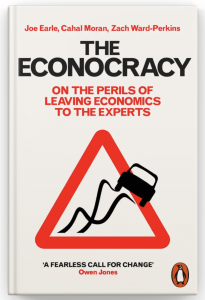 makt över hur beslut fattas i samhällsekonomiska frågor världen över. Författarna myntar begreppet ekonocracy (som i en nylig
makt över hur beslut fattas i samhällsekonomiska frågor världen över. Författarna myntar begreppet ekonocracy (som i en nylig 
